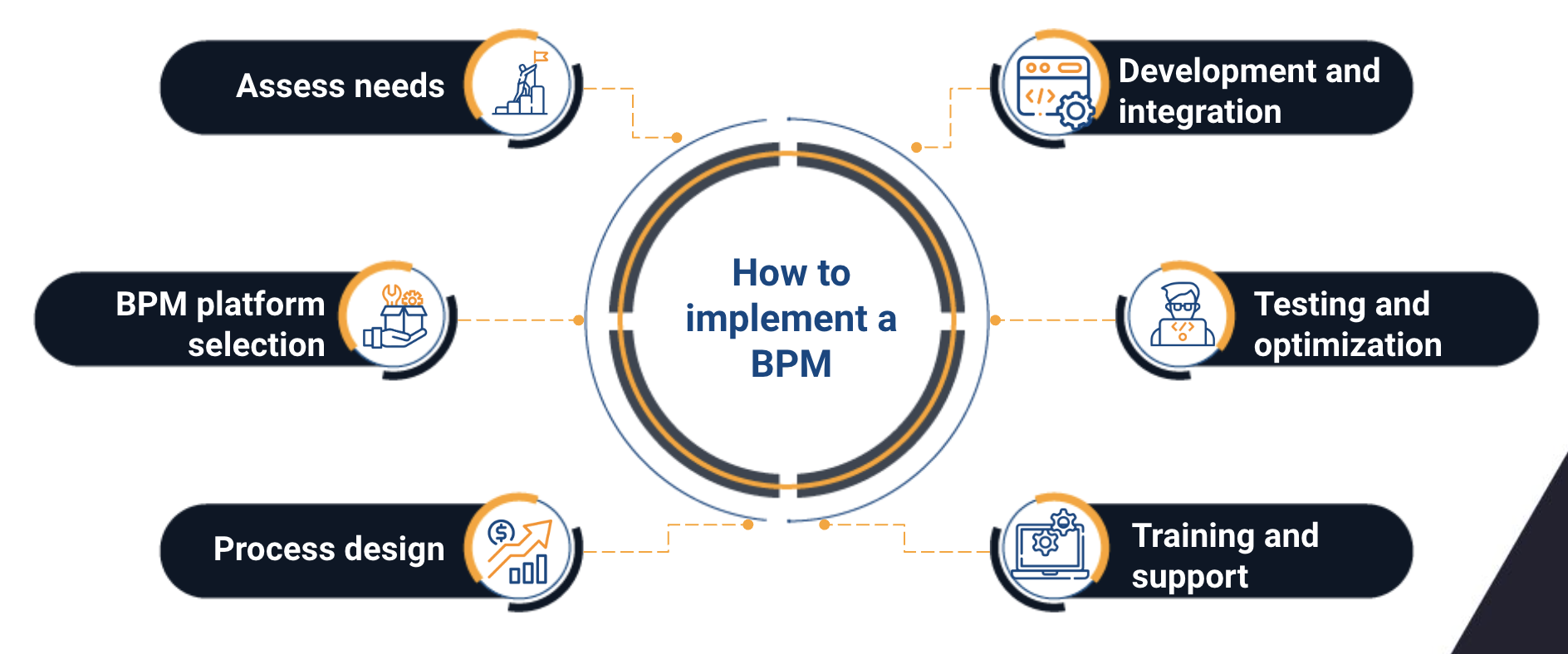
In the modern business world, the need to optimize processes and improve efficiency is paramount. BPM solutions help companies manage and automate their business processes, allowing for greater agility and cost reduction.
However, implementing these solutions can be complex. This is where IT outsourcing comes into play, a strategy that allows companies to outsource technological tasks to experts, ensuring efficient and cost-effective implementation.
Throughout this article, we will explore how IT outsourcing can facilitate the implementation of BPM solutions, providing business leaders with clear guidance on the benefits and best practices to leverage this strategy.
What are BPM solutions?
BPM is a disciplined approach to identifying, designing, executing, monitoring and optimizing business processes. BPM solutions help companies automate repetitive tasks, improve collaboration between departments and track performance in real time. These solutions enable in-depth analysis of business processes, facilitating their continuous improvement.
Implementing a BPM solution is essential for companies seeking to remain competitive in the global market. However, installing and configuring these platforms requires specialized technical knowledge, which often leads companies to turn to IT outsourcing.
Advantages of IT Outsourcing for BPM Implementation
Outsourcing information technology has been a growing trend in recent years due to its numerous benefits. Some of the main advantages of IT outsourcing in the implementation of BPM solutions include:
Cost reduction: Outsourcing the development and implementation of BPM solutions can be more cost-effective than hiring and training an internal team.
Access to experts: IT outsourcing companies have specialists in BPM technologies, ensuring a fast and efficient implementation.
Focus on the core business: By delegating the technical part to external experts, companies can concentrate on their main activities.
Scalability: IT outsourcing allows companies to adjust resources according to their needs, making it easier to adapt to changes in processes or market demand.

BPM Solutions Implementation Process through IT Outsourcing
The process of implementing BPM solutions through IT outsourcing follows a number of key steps that ensure a successful deployment. These steps include:
Needs Assessment
Before implementing a BPM solution, it is crucial to assess the needs of the company and the processes that require automation or improvement.
BPM Platform Selection
There are multiple platforms on the market, such as IBM BPM, Bizagi, or Appian. The outsourcing provider can help select the one that best fits the business objectives.
Process Design
The IT outsourcing provider collaborates with the company to design the processes that will be managed by the BPM solution.
Development and Integration
The external team implements the BPM solution, integrating it with existing systems.
Testing and Optimization
Before deployment, the solution is thoroughly tested to ensure it works smoothly.
Training and Support
An IT outsourcing provider not only implements the solution, but also offers ongoing training and support to ensure long-term success.

How to Choose an IT Outsourcing Provider for BPM Solutions
Selecting a suitable IT outsourcing provider is a critical step in the success of implementing BPM solutions. Below are some key factors that business leaders should consider when selecting a provider:
Experience: It is critical that the provider has experience in implementing BPM solutions.
Customization Ability: The provider should be able to tailor BPM solutions to the specific needs of the company.
Reputation and References: Researching the vendor's reputation and asking for references from previous clients can offer insight into their level of competence.
Support and Maintenance: A reliable provider will offer ongoing support to ensure that the BPM solution runs smoothly even after implementation.
IT Outsourcing Success Stories in BPM Solutions Implementation
There are many examples of companies that have managed to improve their processes and operations by combining BPM and IT outsourcing solutions. For example, companies in the financial sector have been able to automate complex processes such as risk management and regulatory compliance, reducing execution times and human errors.
Another case is the manufacturing sector, where BPM solutions have been implemented to improve the supply chain and optimize production, all with the help of IT outsourcing experts who guarantee proper integration with other ERP systems.

Challenges and Considerations in IT Outsourcing for BPM
While IT outsourcing offers numerous benefits for implementing BPM solutions, it also presents challenges that companies must take into account. Some of these challenges include:
- Communication: Maintaining clear and constant communication with the provider is essential to avoid misunderstandings and delays.
- Data Security: Outsourcing can pose security risks, especially when handling sensitive data. It is vital to ensure that the provider complies with data protection regulations.
- Supplier Dependency: Excessive dependency on an outsourcing provider can be risky if the contract is not managed properly.
The Future of IT Outsourcing in BPM
As companies continue to adopt BPM solutions to improve their processes, the role of IT outsourcing will continue to be crucial. With the growth of automation, artificial intelligence, and machine learning, outsourcing providers that specialize in these areas will become even more valuable.
In addition, the integration of BPM solutions with emerging technologies, such as cloud computing and advanced analytics, will offer new opportunities for companies to improve their efficiency and responsiveness in an increasingly competitive business environment.
IT outsourcing is an effective strategy for implementing BPM solutions, allowing companies to benefit from third-party expertise and resources while optimizing their internal processes. By choosing the right provider and following best practices, companies can make the most of this combination to improve their operational efficiency and stay competitive in the global marketplace.


